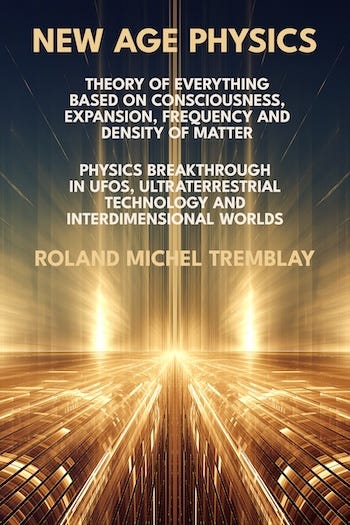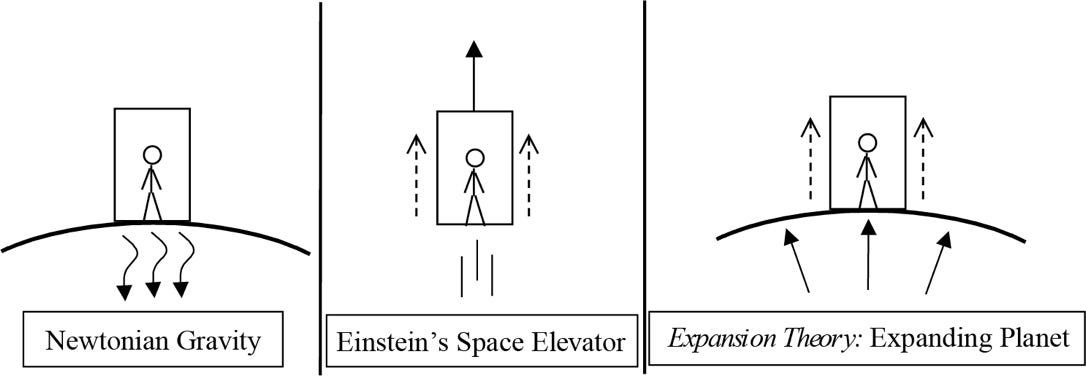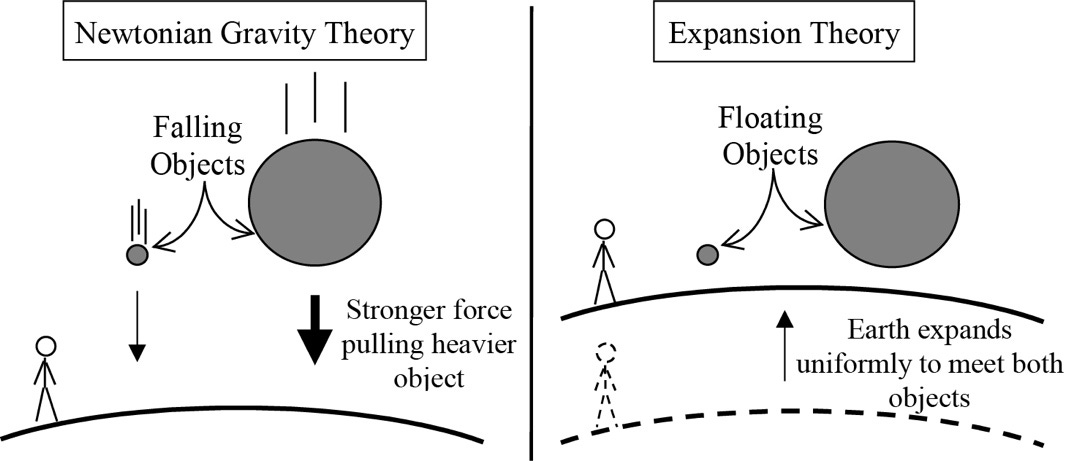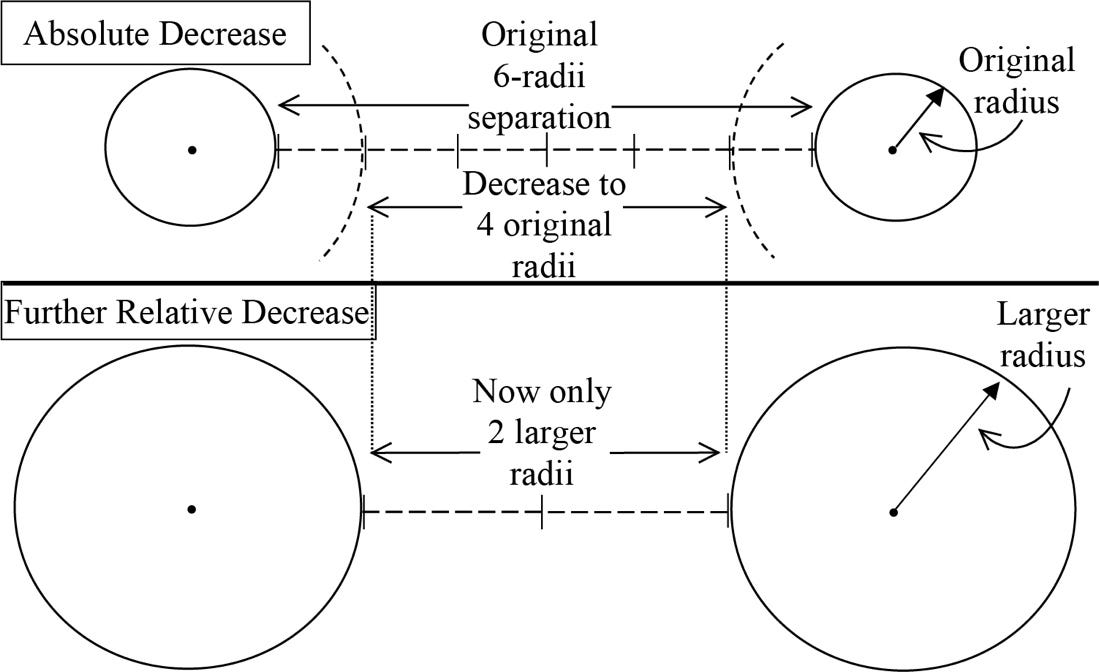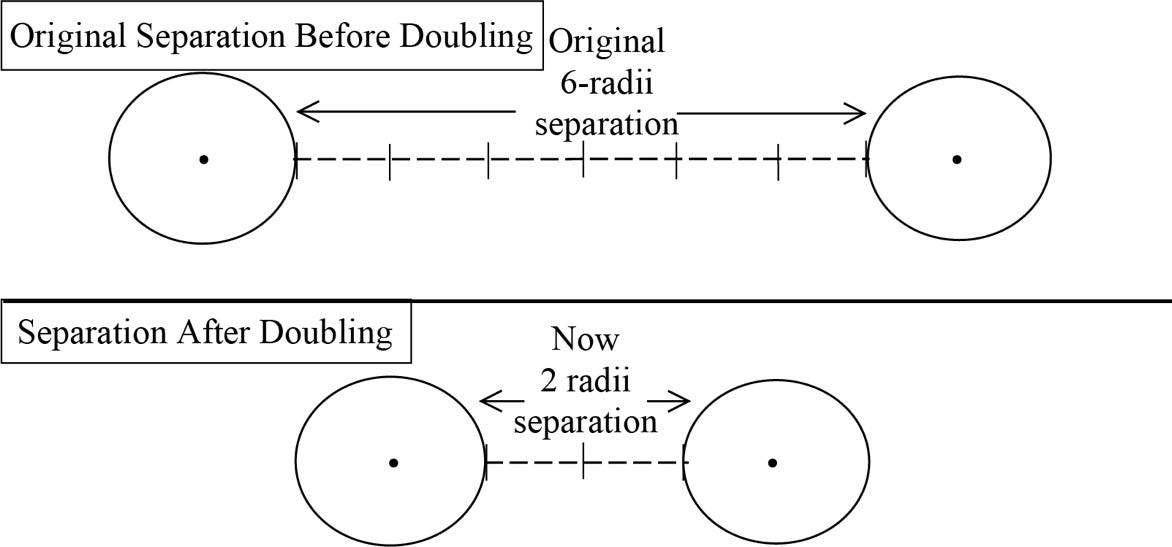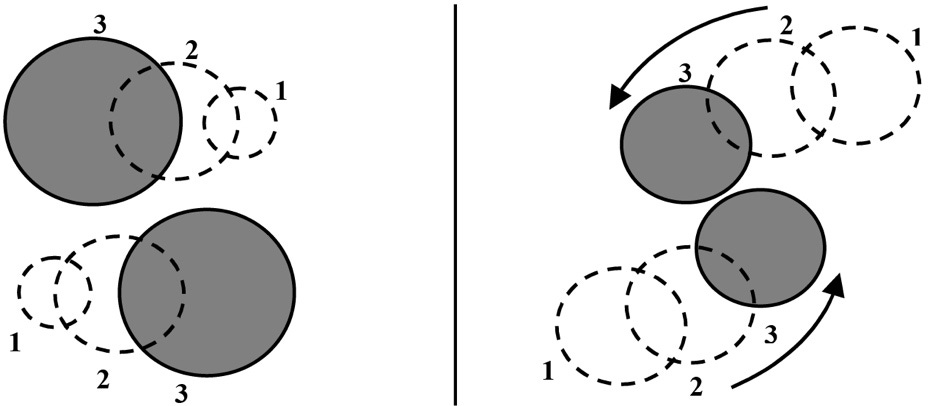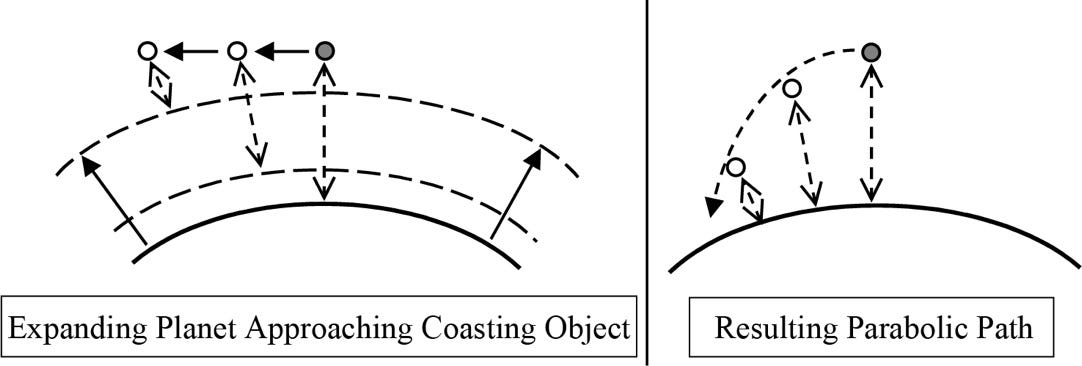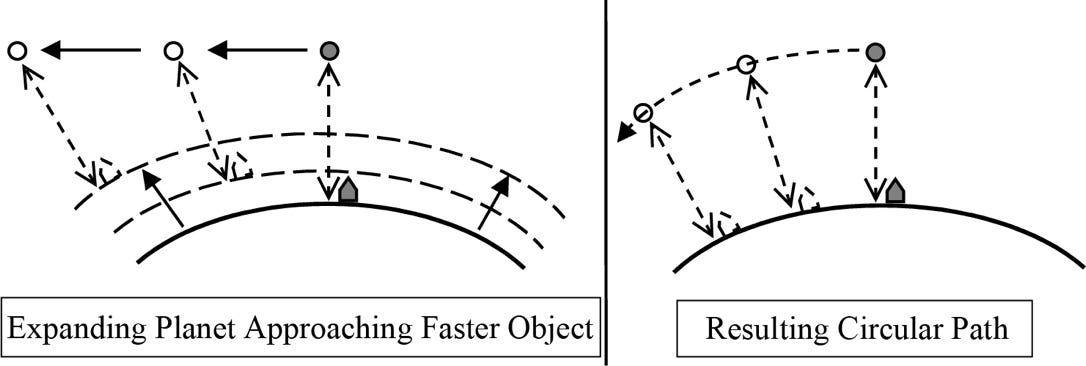2. Gravity and orbits finally explained in physics breakthrough (no paywall)
Physics Breakthrough in Ghosts, UFOs, Ultraterrestrial Technology, and Interdimensional Worlds (2 of 4)
2. Gravity and orbits finally explained in physics breakthrough
No one has ever identified a force acting at a distance, emanating from matter, attracting objects together, while attracting us to Earth, as Isaac Newton suggested. Nor can we find a proof, of Albert Einstein’s proposed curved sheet of spacetime, distorted by heavy objects, that all objects would follow in their course.
Instead, in a new physics breakthrough, the Earth could be expanding in all directions, at a constant rate of 4.9 metres per second, pushing us upwards, while keeping us on the ground. Raindrops and snowflakes might not really be falling to Earth, they could be free floating in the air, until the expansion of the Earth catches up with them. The reason objects appear to attract each other, could be because they are expanding, and the distance between them, would reduce as they expand.
And your first question now should be, why can’t I see anything expand around me? If you were yourself expanding, along with your measuring instruments, how could you possibly tell, if everything else around you, were expanding or not? You couldn’t, the whole process of expansion, would be invisible to you. But it is still happening behind the scenes, and this is what we must visualise, in order to explain most phenomena that we observe.
Gravity is now defined, as the changing distance between expanding objects, as everything continually expands, at the same constant universal rate, of 0.00000077 of proportional size or percentage per second square. Gravity now depends on the size of the objects or particles, and their proportional expansion rate in time, instead of their mass.
And here we are, we now have a third significant theory of gravity, which comes with its own equations, and it is up to the scientific community, to decide which theory explains everything better.
If you fly near a planet made of styrofoam, the gravity from orbit will be the same, as if the planet was made of dense rocks. This is radically different from Newton and Einstein, since in their theories, gravity is based on the mass of the planets. However, once you land on the styrofoam planet, you would not weigh as much. This is because gravity on the ground, also depends on the density of matter, and on the centre of mass, from where matter expands and pushes from, which creates gravitational pressure.
This explains why gravity on the Moon, on the near side, where the centre of mass is located, is one sixth the gravity of the Earth, instead of the one quarter which was expected. Gravity on the Moon, should be just over one quarter that of the Earth, since it is just over a quarter of the size of the Earth. But we will find that, only at the edges of the visible Moon, it is a quarter of the gravity of the Earth. While on the hidden side, it will be one third. So, overall, once added together, it is the expected one quarter.
This means that we must have the wrong mass for the Moon, and as a result, the wrong density, because we used Newton’s equations based on mass for our calculations. Gravity on the surface is just not uniform, all around the Moon. These measurements could only be made on the ground, not from orbit, which makes any landing difficult to plan and achieve. It also explains why 60% of the unmanned missions landing on the moon so far ended in failure.
A reason for this failure to land unmanned missions, might be because the Apollo missions were faked. Especially when considering that none of the manned missions landing on the Moon ended in failure, which is quite astonishing, considering the failure rate of the unmanned missions. If the Apollo missions were fake, the one sixth gravity on the Moon might have been a lie, reflecting the expectation from mainstream science of the time, and it was never verified, neither from orbit nor on the ground. Therefore, gravity on the Moon could still be opened for debate.
If this is correct, it is quite possible that gravity on the Moon, is just over one quarter the one of the Earth, uniform all around the Moon. Possibly a bit less on the near side, and a bit more on the far side, because of the centre of mass located nearer us, but with no major difference.
As mentioned, we cannot see the expansion of all objects, astronomical bodies, and particles in the universe, because we are also expanding. And yet, we still witness the distance reduction between expanding objects, since space does not expand along with everything else.
There are two types of distance reductions involved in gravity. The first one is the absolute decrease in distance, when two objects are expanding at a constant rate. As a result, the distance reduces between the objects, at a constant rate.
But on top of the absolute decrease in distance, there is a relative motion effect, which further reduces the distance, between expanding particles or objects. Because something must justify, that the objects have expanded behind the scenes, that the distance has reduced between them as a result, all without changing size in our reality, from our point of view.
In other words, if two objects double in size, and the distance reduces between them, but afterwards, the objects are still the same size as before, then relatively speaking, there must be even less space than before. A metre before expansion, is now half a metre after the objects have doubled in size, because space does not expand along with everything else. This is called, the further relative decrease in distance in gravity. And this is why, the distance reduces as an acceleration, even although everything expands, at the same constant rate.
To put it simply, although objects and particles expand at a constant rate, the distance between them reduces as an acceleration, because of a relative motion effect, due to the geometry of expansion. The expansion behind the scenes, causes relative motion, which changes the speed and direction of motion of the objects, precisely because we cannot see the expansion.
For example, when you can see the expansion, a satellite orbiting the Earth, is in fact moving away from the Earth in a straight line, fast enough to escape the expansion of the planet. Once you can no longer see the expansion, you are left with a natural orbit effect, of the satellite simply orbiting the Earth. Why?
Because, as the Earth and the satellite expand, and the distance between them reduces, the satellite is also moving away, enlarging the distance between them. In our resulting reality, the distance reduction due to the inner expansion, is cancelled by the satellite moving away. Thus, instead, we see a stable orbit, where the satellite always remains, more or less, at the same distance from Earth. This causes the natural orbit effect we witness.
A satellite in a geostationary orbit, viewed from behind the scenes, is a satellite which is moving away from the Earth, in a straight line, at exactly the right speed to match the expansion of the Earth. Consequently, the distance between the satellite and the Earth, always remains exactly the same. The result in our reality, is a satellite which remains immobile, at a specific location over the Earth, as if frozen in place.
This explains orbits, and shows how an effect of relative motion is created, between what is happening behind the scenes, and what we see in our resulting reality. A satellite does not need to be accelerating behind the scenes, for a relative motion effect to cause an acceleration, in our resulting reality. The geometry of expansion, naturally accelerates all objects orbiting each other, in a permanent slingshot effect affecting all orbits.
This results in a to-and-fro movement, because they are continually moving away from each other, but gravity is continually bringing them back together. Gravity being an acceleration, this creates a constant swinging of the objects around each other, which is continually accelerating the orbiting objects.
This is called relative motion, because what we see, depends on where we observe it from. Like from behind the scenes, where we can see the expansion, or from our resulting reality, where we cannot. Relativity is always about something we can see differently, depending on our point of view.
There is always only one event taking place, an expanding satellite moving in a straight line, away from the expanding Earth. But, from our point of view, where we cannot see the expansion, we see an orbit instead, along with all sorts of relative motion effects, which have a real impact on our reality.
Relative motion effects can cause accelerations or decelerations, of astronomical bodies or particles, but can also increase or decrease kinetic energy. Kinetic energy is the force of impact, objects and particles can have on anything they hit, which they acquire through their speed. This is how expansion can cause motion and create energy.
Table of content (no paywall)
An entirely new science is required to explain any paranormal phenomenon
Gravity and orbits finally explained in physics breakthrough
For light, should we use E=mc2 or the kinetic energy equation Ek=½mv2?
Unifying the physics of the very small and the very large in a theory of everything
Moving in fast forward or slow motion, interdimensional time is relative
The true nature of our flimsy and changing psychological reality
How to see and record ghosts, interdimensional beings, and UFOs
In time all particles orbit slightly faster, as we continually move into higher dimensions
Why time and space are an illusion, and how to instantaneously travel anywhere in time
Download New Age Physics Free Chapters:
Book PDF, Docx PDF, DOCX, Kindle ePub, Kindle Mobi, Apple Books, Nook, Google Play, Kobo, Generic ePub


